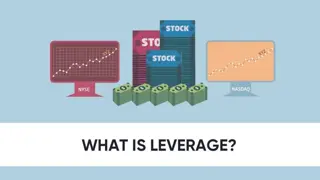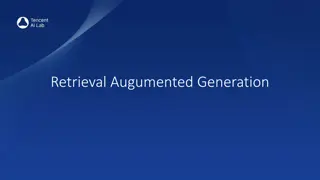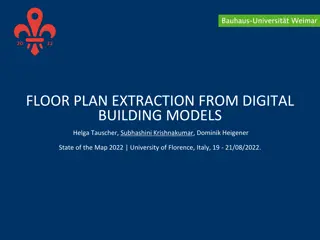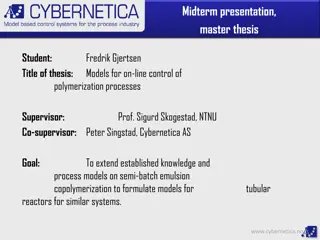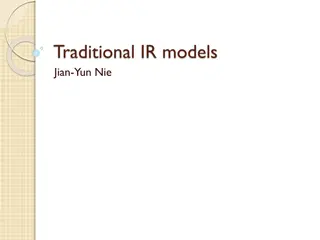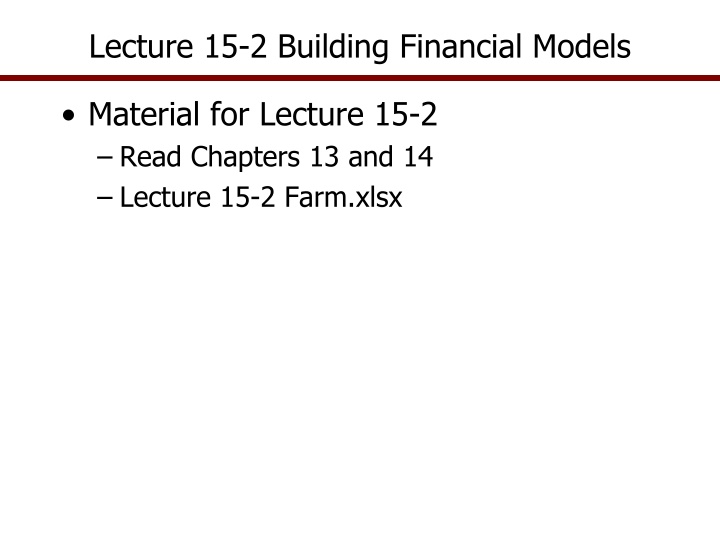
Financial Modeling Essentials for Agricultural Businesses
Explore the key components of building financial models for farming operations, including KPIs, financial statements, income statements, cash flow statements, and balance sheets. Learn how to analyze net cash income, cash flow, change in net worth, and more through practical steps and examples.
Download Presentation

Please find below an Image/Link to download the presentation.
The content on the website is provided AS IS for your information and personal use only. It may not be sold, licensed, or shared on other websites without obtaining consent from the author. If you encounter any issues during the download, it is possible that the publisher has removed the file from their server.
You are allowed to download the files provided on this website for personal or commercial use, subject to the condition that they are used lawfully. All files are the property of their respective owners.
The content on the website is provided AS IS for your information and personal use only. It may not be sold, licensed, or shared on other websites without obtaining consent from the author.
E N D
Presentation Transcript
Lecture 15-2 Building Financial Models Material for Lecture 15-2 Read Chapters 13 and 14 Lecture 15-2 Farm.xlsx
Step 1: KOVs What question is to be answered? Net cash income? Cash flow? Change in net worth? Number of years to payoff? Something else as: NPV, B/C, IRR, EBIT Scenarios to analyze Financing, technology, machinery replacement Marketing strategies, etc. Risk ranking
Step 2: Financial Statements Required Based on the purpose of the model what calculations are required? Net cash income detailed income statement Sources of all receipts and expenses Usually an annual model Cash flow model income and cash flow statements Details for cash outflows Requires a multi-year model NPV or Change in Net Worth income, cash flow, and balance sheet Multi-year models
Step 3: What is in an Income Statement? All sources of receipts Show receipts by enterprise and type (government, insurance, sales, etc. DO NOT include interest earned or outside income All sources of CASH expenses Show cash costs for each enterprise Show fixed costs in detail (taxes, insurance, etc) Show each interest expense, by loan Net cash income = receipts expenses
Step 4: Parts of a Cash Flow Statement All sources of cash inflows Start with beginning cash from t-1 Net cash income Interest earnings from cash reserves Total inflows of cash All sources of cash outflows Owner salary and bonus or dividends for corp. Income taxes, principal payments paid Down payments for machinery & livestock Total outflows of cash Ending cash = Inflows - Outflows
Step 5: What is in the Balance Sheet? Assets Beginning cash January 1: IF (ending casht> 0) Land, machinery, livestock market values Total assets Liabilities Cash flow deficit loans: IF (ending casht<0) Liabilities for land, machinery, livestock Total liabilities Net worth = Assets - Liabilities
Step 6: Important KOVs Net present value = -Beginning Net Worth + ( dividends or cash withdrawalst/(1+i)t) + [Ending Net WorthT/ (1+i)t] P(Economic Success or NPV > 0) P(Ending Casht> 0) P(Net Cash Incomet> 0) P(Increasing Real Net Worth) P(Benefit to Cost Ratio > 1.0) Number of Years to Payoff Debt/Asset and many more
Now ready to Build the Model Stochastic worksheet -- STOCH Gather historical data for all stochastic variables Develop forecasts of random variables Estimate parameters for alternative distributions and select the best dist. for each variable Determine whether multivariate or univariate Simulate the random variables for all years using stochastic forecasts of the random variables Validate the random variables
Program Equations in the Model Use the stochastic values in the appropriate equations to calculate intermediate variables Start by programming the equations that will go into the Income Statement, eg. Receiptst= (Priceit* Yieldit* Acresit) for i crops and each year t
Assemble the Financial Tables Use cell references to map calculated values into the financial statements The only calculated equations in the financial tables should be Totals Operating interest expense Interest for carryover cash flow deficit loans Dividends or cash withdrawals or bonus payments USE IF statements to deal with ending cash in the Balance Sheet. It is either an asset or a liability.
What Was Left Out of the Model? Non-cash expenses Unpaid family labor Depreciation Two kinds of depreciation Income tax deductions Decreases in market value (this is included in the balance sheet as we use market value of assets) Depreciation can be subtracted from net cash income to calculate net income. Has no place in a cash model These variables do not belong in a cash basis model
Organization of a Model Model worksheet All input data at the top so you can see the assumptions and easily make changes Equations for all intermediate financial variables Pro Forma Financial tables Debt amortization tables Income tax schedules and calculations Stoch worksheet All forecasting and parameter estimation work with validation summaries
Multi-Year Financial Models Applications Financial risk management Analysis of the economic impact of changes in the business plan for a firm on Ability to repay loans on time Ability to remain solvent Ability to earn a satisfactory rate of return on investment Analysis of alternative marketing schemes that use contracts, futures and options to manage price risk Testing Portfolios Analysis of alternative combinations of investment instruments (stocks, bonds, land, etc.) Analyze enterprise mixes A portfolio of investments is similar to a derivative in the investment world
Financial Risk Management Uses of this type of model Test ability of firm to repay operating debt under alternative assumptions about Other income Family/dividend withdrawal assumptions Machinery replacement plans Re-financing the initial machinery loans Insurance, pricing, and marketing options for the crops Farm program provisions Costs of production including rental rates for land Purchasing land rather than leasing Users of this type of model Lenders concerned about loan solvency Borrowers concerned about impacts of growth or adding a family member
Demonstrate Model Development Lecture 15-2 Farm.xlsx





